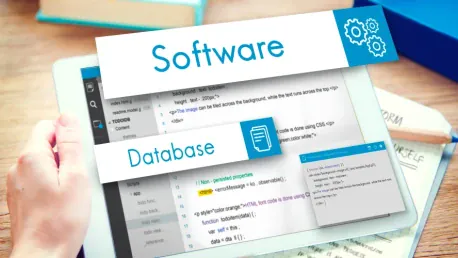Open source software (OSS) has significantly transformed the software development industry over the past two decades. Starting as a niche movement, it has now become a mainstream approach integral to both commercial and noncommercial software landscapes. Open-source software is defined by its open accessibility, allowing anyone to view, modify, enhance, and distribute the software for free. This collaborative approach has broken down barriers that traditionally confined software development within individual companies, enabling global communities of developers to contribute and innovate collectively.
Adoption and Growth of Open Source Software
Increasing Adoption Rates
Open source has seen a massive increase in adoption within the tech industry. A 2024 survey revealed that 95% of tech professionals incorporate open-source software in their tech stacks, a significant rise from 80% in 2020. This surge in adoption is driven by several factors, including the maturing ecosystem of established open-source projects like Linux, Kubernetes, React, and TensorFlow. These projects offer mature features, comprehensive documentation, and governance models that inspire trust for both commercial and noncommercial use.
The maturation of these projects has made them reliable for a range of applications, from enterprise-level systems to individual projects. This trusted stability has encouraged the industry to adopt open-source solutions with growing confidence. Open-source software has become integral to technological innovation by offering shared resources and collective problem-solving initiatives. This democratization of software development resources has allowed even small-scale developers to leverage powerful tools without incurring significant costs.
Cost Savings and Security
One of the primary drivers of open-source adoption is cost savings. Open-source licenses are usually free, reducing costs compared to proprietary software. Maintenance costs are also minimized as globally distributed teams handle enhancements. This community-driven approach to maintenance means that problems are often identified and addressed more quickly than in traditional, closed development environments. Contrary to initial fears, open-source software tends to be more secure due to mass peer reviews and quick resolution of vulnerabilities.
The transparency of open-source software facilitates rapid experimentation and cutting-edge developments by enabling access to and building upon existing code. This open approach has allowed for quick adaptation and modification, fostering a culture of continuous improvement. Furthermore, the large number of eyes on the codebase means security vulnerabilities are often detected and patched swiftly, which enhances the overall reliability and trustworthiness of open-source projects.
The New Norm for Software Development
Preference for Open Source Libraries
Open source has shifted from being a fringe movement to the default norm in software development. Developers now prefer using existing open-source libraries before considering new proprietary code. This preference is driven by the desire to avoid reinventing the wheel, allowing developers to innovate on proprietary value additions rather than reworking common functionalities. Leveraging existing open-source solutions enables faster development and more efficient use of resources, giving developers more time to focus on unique aspects of their projects.
Using open-source libraries not only accelerates development but also fosters collaboration and shared knowledge within the tech community. Developers can rely on the thorough testing and scrutiny these libraries undergo by a vast number of users. This collective effort results in more robust and well-documented code, which translates into reduced development time and costs. Such a cooperative strategy ensures that innovation is a community effort, making advancements more readily accessible to all.
Community and Interoperability
Open-source projects benefit from pooled resources and collective contributions, leading to healthier and more sustainable development. The community of shared investment ensures that open-source software with known security and support models provides a reliable foundation for commercial product integration. Additionally, open-source software typically adheres to open standards and data models, enhancing compatibility and integration across different platforms and tools. Such interoperability means that open-source tools can be seamlessly integrated into diverse tech stacks, providing flexibility to adapt to changing technological landscapes.
This community-centric approach not only ensures that projects receive continual improvements but also fosters educational opportunities, where new developers learn from established ones. Many open-source projects serve as educational tools, allowing emerging developers to understand best practices and coding standards. The inclusive, transparent nature of the open-source community encourages diverse and innovative contributions, making software development more equitable and wide-ranging.
Emergence of Open-Source Business Models
Dual Licensing and Open Core
Open-source software has evolved to include various sustainable business models that balance commercial interests with community values. Dual licensing offers software under both open-source and commercial licenses, catering to different user needs. MySQL and Qt have successfully implemented this model. This approach allows companies to benefit from the wide adoption of their software while also monetizing commercial licenses for users requiring dedicated support or additional features.
Another approach is the open core model, where an open-source core product drives adoption, while proprietary plugins and add-ons generate revenue. This model maintains the benefits of an open-source base, such as community contributions and a broad user base while providing a revenue stream through premium features. Many companies have successfully utilized this model, enabling them to support ongoing development and ensure project sustainability. This balance of open-source innovation and proprietary enhancements allows businesses to thrive while maintaining community engagement.
SaaS Delivery and Open Source Services
Charging for software delivered as a service while distributing the source code for free is a common model, utilized by companies like Elastic and MongoDB. This approach allows companies to monetize their open-source projects while maintaining community engagement. By providing software as a service (SaaS), these companies can offer robust, scalable solutions with ongoing support. Additionally, the source code remains accessible, enabling users to customize and extend functionalities as needed.
Another profitable model is selling consulting, implementation, and managed hosting services while providing the software for free. This approach is exemplified by Red Hat, which leverages its expertise to offer value-added services around the open-source software. This strategy not only generates revenue but also promotes the adoption of open-source solutions by providing expert guidance and support. Companies following this model can build strong, lasting relationships with their clients by ensuring the successful implementation and ongoing operational support for the software.
Impact on Technology Industry Segments
Infrastructure Software
Open-source projects like Linux, Kubernetes, OpenStack, and Cloud Foundry have dominated the infrastructure software segment. Linux has become the leading operating system, surpassing proprietary UNIX variants in terms of innovation, security, and resilience. The LAMP stack powers most public web servers, further demonstrating the dominance of open-source infrastructure. Kubernetes has set the standard for deploying microservices-based architectures, supported by a vibrant ecosystem of complementary open-source projects like Prometheus, Envoy, and Istio.
The wide adoption of these open-source infrastructure projects has led to significant cost savings and increased flexibility for organizations. By providing a robust and customizable foundation, these tools enable businesses to design and manage complex IT environments efficiently. Additionally, the collaborative nature of open-source projects means continuous improvements and innovations are constantly made, ensuring they remain at the forefront of technological advancements.
Big Data Analytics
The transition to open-source tools like Hadoop, Spark, and Kafka has revolutionized the big data analytics segment. Proprietary analytics tools were expensive and restrictive, creating a demand for flexible, transparent, and affordable open-source alternatives. Open-source machine learning frameworks such as TensorFlow, Scikit-Learn, PyTorch, and Keras are now the most popular tools for building predictive analytics solutions. The broad acceptance of these open-source tools has democratized access to advanced analytics and machine learning capabilities, enabling organizations of all sizes to leverage big data.
Even public cloud providers offer managed services for these open-source tools, evidencing their widespread acceptance. The integration of open-source analytics frameworks with cloud platforms has made it easier for companies to deploy, manage, and scale their big data solutions. This synergy between open-source software and cloud infrastructure has driven significant innovation, allowing for more efficient data processing and analysis, ultimately leading to better decision-making and strategic insights for businesses.
Artificial Intelligence (AI)
AI experienced a pivotal moment when Google open-sourced TensorFlow in 2013, accelerating innovation by removing barriers to experimentation. Most organizations now prefer open-source machine learning tools to build AI solutions, avoiding vendor lock-in and ensuring transparency in algorithmic behavior. The open data model in many open-source AI projects has improved research integrity and accelerated scientific discoveries. By making AI research more accessible, open-source projects have enabled researchers and developers to translate theoretical advancements into practical applications rapidly.
The collaborative nature of open-source AI tools has led to the development of a diverse range of solutions and frameworks, fostering a rich ecosystem of innovation. Organizations can leverage these tools to create bespoke AI models tailored to their specific needs, ensuring they remain competitive in an increasingly AI-driven marketplace. The transparency inherent in open-source projects also promotes ethical AI practices by allowing for scrutiny and accountability in the development and deployment of AI algorithms.
Frontend Web Applications
Open source software (OSS) has profoundly reshaped the software development industry over the last twenty years. What began as a niche movement has evolved into a mainstream methodology that’s essential in both commercial and non-commercial software environments. OSS is characterized by its open accessibility, allowing anyone—whether a solo developer or a large corporation—to view, modify, improve, and share the software at no cost. This open collaboration model has dismantled the traditional barriers that used to confine software development to individual companies. Instead, it has empowered global communities of developers to engage in collective innovation and problem-solving.
By fostering this kind of cooperative environment, open-source software has not only accelerated the pace of technological advancement but also democratized access to high-quality software tools and resources. Many popular and essential tools like the Linux operating system, the Apache HTTP Server, and the database management system MySQL are open source, further proving the viability and success of this approach. Importantly, the open-source model has promoted transparency, security, and flexibility, which are crucial attributes in the modern tech landscape. As a result, OSS continues to thrive and drive progress in both established sectors and emerging fields, making it an indispensable part of today’s software development ecosystem.









